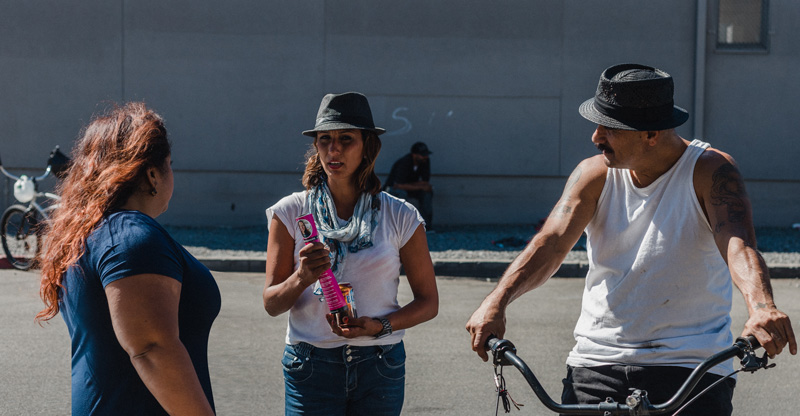
SARMIENTO HOMELESS PLAN
Homelessness is a big issue in our community. Now that the County has cleared the homeless from the riverbed with no long-term resettlement plan, it’s up to Santa Ana to take the lead on how to meet the needs of our residents, business owners and vulnerable populations.
As a UCSD Sociology student Sandra studied subcultures, refugee camps and women’s issues. While working at Los Angeles film studios, Sarmiento put her sociology training to practical use by organizing excess production food distribution to DTLA homeless camps. She also consulted on the 2000 Census in enumerating the downtown homeless and continues to help today, sharing food, clothing & resources the women living in cars, RVs and motels near her Eastside neighborhood.
The following 5-point plan was developed by years in the field, studying Santa Ana’s regional challenges.
- Assess County Resources – The County of Orange has resources already allocated towards homeless issues. We need to assess what is available to us. The County also owns huge parcels of land both in and out of the city, such as the service lots behind the train station, convenient to helping out-of-town homeless get back home. Security and Surveillance Services for any Homeless Service Zones should be provided by the County’s homeless allocation fund in partnership with the OC Sheriff and private firms.
- Zone Homeless Services – Controlled Substances should not be sold or distributed next to our homes or schools. That’s why our residents voted to zone our Cannabis industry in industrial areas, to create a geographic buffer for a more cooperative land use between industry and our local residents. Similarly, needle distribution, methadone, food, hygiene and other services must happen in appropriately zoned areas. We must work in partnership with the County and private land holders to identify areas where we can cluster homeless services and transitional housing/holding facilities. The County can provide and pay for robust security/surveillance services on these parcels, the cost of daily upkeep, and coordinating return travel & housing assignments around the region for Santa Ana’s homeless.
- Designate Safe Parking Lots – Homeless who live in Cars are a growing community, especially as housing costs continue to rise. Housing insecurity means that many working adults and families are living out of their vehicles in-between room rentals. This population is the most easily transitioned back to conventional residential life because they are often employed and already own a significant asset, their vehicle! By providing a secure environment, hygiene facilities and targeted social services, like housing referrals, child care options and access to job training, we can help these folks transition back into the mainstream as productive members of society.
- Target Affordable Housing – Our Housing Opportunity Ordinance, which sets aside 15% of the value of all new market rate housing developments to build new long-term Affordable Housing, can be used to target Federally recognized classes of vulnerable populations like Seniors, Veterans, the Disabled (mental/physical) and even Artists! There is no reason for there to be Senior Citizens or Veterans on our streets when there are so many great incentives and successful models for financing these much-needed adaptive-reuse & new build developments.
- Focus on Women and Families – NGO’s have demonstrated since the 1950’s that resources spent on women go the farthest. Mothers especially are more likely to ensure food gets distributed among their whole circle so that all children are fed. Prioritizing Families also ensures couples stay together in working towards a healthy partnership. Part of these Female & Family support services would be access to classes in Financial Planning, Nutrition & Self Care.
